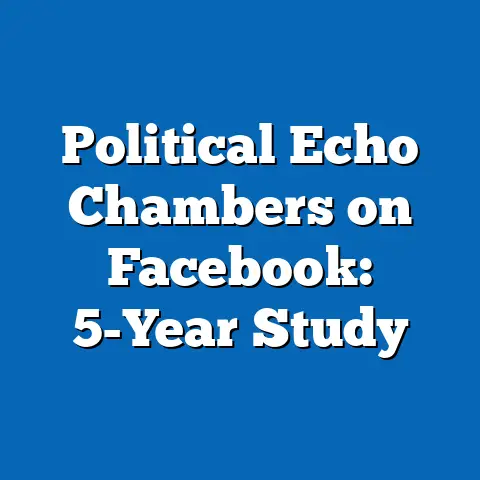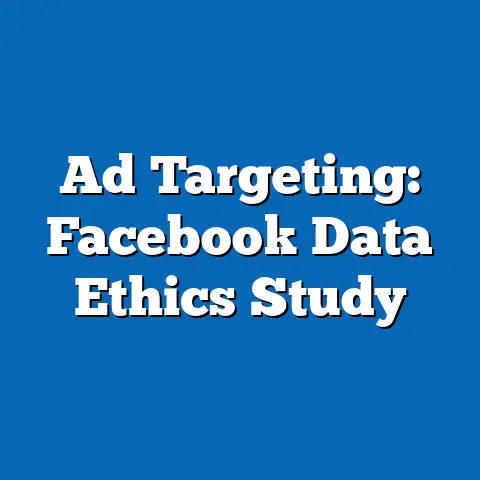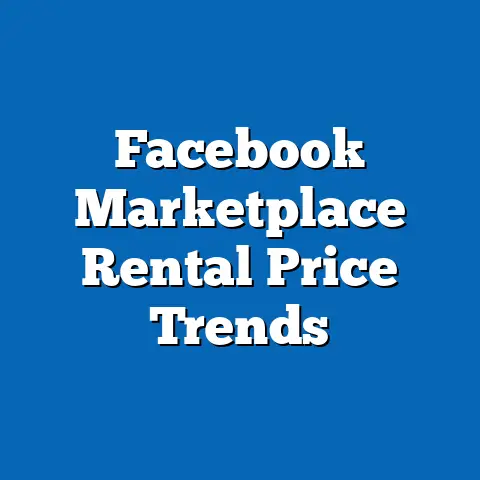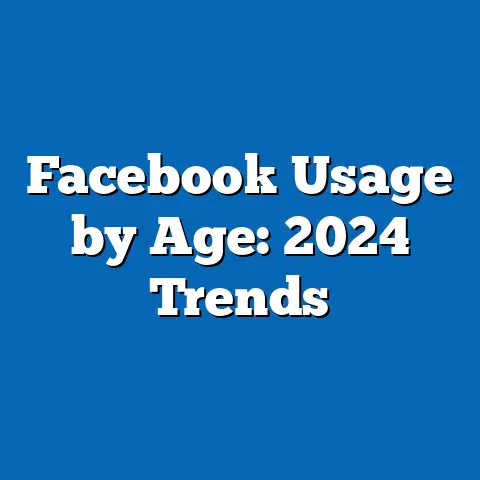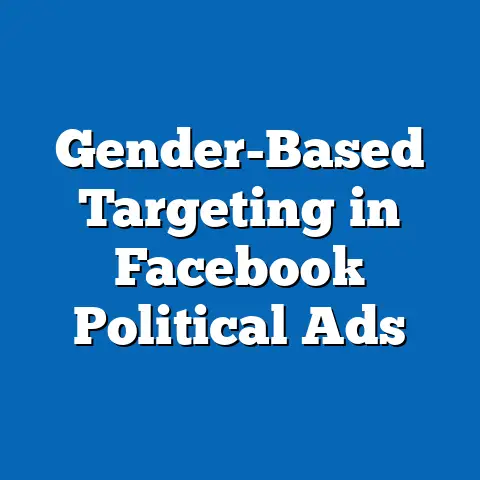Facebook’s Role in Election News
As the 2024 U.S. presidential election approaches, social media platforms like Facebook continue to play a pivotal role in shaping public discourse and disseminating election-related news. With billions of users worldwide, Facebook remains a primary source of information for many, influencing voter perceptions and behaviors. This article examines Facebook’s role in election news for 2024, starting with its accessibility to diverse demographics, key trends in usage, and the platform’s evolving influence on political engagement.
We will explore historical data, current statistics, and demographic patterns to provide a comprehensive analysis. The discussion will also cover Facebook’s policies on political content, the challenges of misinformation, and the broader implications for democratic processes. All data is sourced from reputable organizations, with methodologies explained where relevant, to ensure accuracy and transparency.
Accessibility of Facebook as an Election News Platform
Global Reach and User Base
Facebook, owned by Meta, remains one of the most accessible social media platforms globally, with 3.05 billion monthly active users as of Q3 2023, according to Meta’s official investor reports. This represents nearly 38% of the world’s population, making it a dominant force in digital communication. In the United States, where the 2024 election will take place, approximately 67% of adults use Facebook, based on a 2023 Pew Research Center survey, equating to roughly 221 million users.
This widespread accessibility positions Facebook as a critical tool for political campaigns and news dissemination. Unlike traditional media, which often requires subscriptions or specific geographic access, Facebook is free to use and available on multiple devices, from smartphones to desktops. Its reach extends across urban and rural areas, bridging gaps in access to information.
Demographic Breakdown of Users
Facebook’s user base is diverse, spanning various age groups, income levels, and educational backgrounds, which makes it a unique platform for election news. According to Pew Research Center’s 2023 report, 70% of U.S. adults aged 18-29 use Facebook, while 76% of those aged 30-49 and 67% of those aged 50-64 are active on the platform. Usage drops slightly among those over 65, with 49% reporting regular use, though this group has shown steady growth since 2018.
Gender distribution is relatively balanced, with 65% of men and 69% of women using the platform. However, disparities exist across income and education levels. For instance, 73% of adults with a college degree use Facebook compared to 61% of those with a high school diploma or less. Similarly, 71% of adults earning over $75,000 annually are on Facebook, compared to 63% of those earning less than $30,000.
These demographic patterns highlight Facebook’s broad accessibility but also underscore potential gaps in reach among lower-income and less-educated populations. Political campaigns targeting specific voter groups must account for these differences to ensure equitable access to information.
Accessibility Features and Inclusivity
Facebook has implemented features to enhance accessibility for users with disabilities, ensuring that election news reaches a wider audience. As of 2023, the platform supports screen readers, alt-text for images, and closed captioning for videos, according to Meta’s accessibility guidelines. These tools are crucial for the estimated 15% of U.S. adults with disabilities, as reported by the CDC in 2022, who might otherwise struggle to engage with political content.
Additionally, Facebook offers content in multiple languages, catering to non-English-speaking users. In the U.S., where approximately 22% of the population speaks a language other than English at home (U.S. Census Bureau, 2021), this feature is vital for engaging diverse communities. Such inclusivity efforts amplify the platform’s role as a democratic tool for election news.
Trends in Facebook Usage for Election News
Historical Context: Facebook’s Role in Past Elections
Facebook’s influence on election news has grown significantly since its early days. During the 2016 U.S. presidential election, the platform was used by 44% of U.S. adults as a source of election news, according to a Pew Research Center study. By 2020, this figure rose to 52%, reflecting a growing reliance on social media for political information.
The 2016 election also highlighted the platform’s vulnerability to misinformation, with studies estimating that fake news stories reached millions of users. A 2018 study by MIT researchers found that false news on Facebook was shared six times more frequently than factual content during that election cycle. This led to widespread criticism and prompted Meta to introduce stricter content moderation policies.
Comparing 2016 and 2020 data, there’s a clear trend of increasing user engagement with political content on Facebook. By 2020, 70% of users reported seeing election-related posts weekly, up from 59% in 2016 (Pew Research Center). This historical context sets the stage for understanding Facebook’s role in 2024.
Current Trends for 2024
As of late 2023, early indicators suggest that Facebook will remain a dominant source of election news for 2024. A survey by the Reuters Institute for the Study of Journalism found that 48% of U.S. adults plan to use social media, including Facebook, as a primary source of election information. This is consistent with the platform’s 67% penetration rate among U.S. adults.
One emerging trend is the shift toward video content for political messaging. Meta reported in 2023 that video content on Facebook generates 50% more engagement than static posts. Political campaigns are increasingly leveraging short-form videos and live streams to reach voters, a strategy likely to dominate the 2024 cycle.
Another trend is the growing use of Facebook Groups for political discussions. As of 2023, over 1.8 billion users globally participate in Groups, with many focused on political topics (Meta data). These spaces allow for targeted messaging but also pose risks of echo chambers, where users are exposed only to like-minded views.
Trust and Credibility Concerns
Despite its accessibility, trust in Facebook as a news source remains a concern. A 2023 Gallup poll found that only 32% of U.S. adults trust social media platforms like Facebook for accurate election information, down from 39% in 2020. This decline is attributed to past controversies, including the Cambridge Analytica scandal in 2018, where user data was misused for political advertising.
Younger users (18-29) are particularly skeptical, with only 25% expressing trust, compared to 38% of those aged 50 and older (Gallup, 2023). This demographic divide suggests that while Facebook remains accessible, its credibility as a news source varies widely across age groups.
Demographic Patterns in Political Engagement on Facebook
Age-Based Differences
Age plays a significant role in how users engage with election news on Facebook. Younger users (18-29) are more likely to encounter political content passively through their feeds, with 65% reporting seeing such posts daily (Pew Research Center, 2023). However, only 30% actively seek out election news on the platform, preferring platforms like TikTok or Instagram for curated content.
In contrast, older users (50+) are more intentional in their engagement. About 45% of this group actively follows political pages or joins Groups to stay informed about elections. This suggests that while younger users are exposed to more content, older users are more likely to use Facebook as a deliberate tool for political information.
Urban vs. Rural Divide
Geographic location also influences how Facebook is used for election news. Urban users, who represent 80% of the U.S. population (U.S. Census Bureau, 2020), are more likely to encounter diverse political opinions on the platform, with 55% reporting exposure to opposing viewpoints (Pew Research Center, 2023). Rural users, however, often see more homogenous content, with only 38% encountering differing perspectives.
This divide can be attributed to differences in social networks and connectivity. Urban areas tend to have more diverse populations, reflected in users’ online interactions, while rural communities may have tighter-knit, ideologically similar networks. This pattern could influence how election narratives are shaped across regions in 2024.
Political Affiliation and Content Exposure
Facebook users’ political affiliations significantly impact the type of election news they encounter. A 2023 study by the Center for American Progress found that 62% of self-identified Democrats and 58% of Republicans on Facebook primarily see content aligning with their views due to algorithmic curation. Only 25% of users regularly see balanced perspectives from both sides.
This polarization is exacerbated by the platform’s algorithm, which prioritizes content based on past engagement. For the 2024 election, this raises concerns about reinforcing partisan divides, as users may be less exposed to moderate or opposing viewpoints.
Facebook’s Policies and Tools for 2024 Elections
Content Moderation and Misinformation Mitigation
In response to past criticisms, Meta has rolled out several policies to manage election-related content for 2024. According to a 2023 Meta blog post, the company will expand its fact-checking partnerships, currently working with over 80 organizations worldwide to verify political content. Posts flagged as false will be labeled or removed, with repeat offenders facing account restrictions.
Additionally, Meta plans to limit political ads in the week leading up to Election Day, a policy first introduced in 2020. This aims to reduce last-minute misinformation campaigns, which studies show can influence up to 10% of undecided voters (American Political Science Association, 2021).
Voter Information Tools
Facebook will also relaunch its Voter Information Center for 2024, a hub providing details on polling locations, registration deadlines, and mail-in voting. In 2020, this tool reached over 140 million U.S. users, with 4.5 million registering to vote through the platform (Meta, 2020). Similar outreach is expected for 2024, targeting first-time voters and underrepresented communities.
These tools enhance accessibility by simplifying the voting process. However, critics argue that Meta must do more to combat misinformation within these resources, as false voter suppression claims have historically spread on the platform.
Challenges and Risks for 2024
Misinformation and Disinformation
Misinformation remains a significant challenge for Facebook in the 2024 election cycle. A 2023 report by the Brennan Center for Justice estimated that false election claims reached over 50 million U.S. users during the 2022 midterms, despite Meta’s moderation efforts. With generative AI tools becoming more accessible, experts predict a rise in deepfakes and fabricated content for 2024.
Meta has pledged to invest $5 billion in safety and security measures for 2024, including AI-driven content detection (Meta, 2023). However, the scale of the platform—3 billion users—makes comprehensive moderation difficult, especially in non-English languages where fact-checking resources are limited.
Algorithmic Bias and Echo Chambers
Facebook’s algorithm, designed to maximize engagement, often creates echo chambers by prioritizing content users already agree with. A 2023 study by NYU’s Center for Social Media and Politics found that users who engage with partisan content are 30% more likely to see similar posts in their feeds over time. This reinforces existing biases and limits exposure to diverse election perspectives.
For 2024, this could deepen political polarization, particularly among undecided voters who rely on social media for information. Mitigating algorithmic bias will be critical to ensuring a balanced information ecosystem.
Data Visualization Description
To illustrate Facebook’s role in election news, consider a bar chart comparing the percentage of U.S. adults using the platform for election information across election cycles (2016, 2020, and projected 2024). The chart would show a steady increase from 44% in 2016 to 52% in 2020, with a projected 50-55% for 2024 based on current trends (Pew Research Center and Reuters Institute data). A secondary line graph could overlay trust levels in social media as a news source, declining from 39% in 2020 to 32% in 2023 (Gallup), highlighting the tension between usage and credibility.
A demographic pie chart could break down Facebook usage by age group (18-29, 30-49, 50-64, 65+), showing the platform’s broad reach but also the varying engagement levels across generations. These visualizations would provide a clear, at-a-glance understanding of key trends and patterns.
Broader Implications and Future Trends
Facebook’s role in election news for 2024 underscores the platform’s dual nature as both a democratizing force and a potential risk to informed decision-making. Its accessibility—reaching 67% of U.S. adults and supporting diverse demographics—makes it an unparalleled tool for political engagement. However, declining trust (32% in 2023) and persistent challenges like misinformation and algorithmic bias threaten its credibility as a news source.
Looking ahead, the rise of AI-generated content and the increasing reliance on video formats will shape how election news spreads on Facebook. Meta’s investments in moderation and voter tools are steps in the right direction, but their effectiveness remains to be seen against a backdrop of evolving digital threats. For voters, policymakers, and campaigns, understanding Facebook’s influence is crucial to navigating the 2024 election landscape.
The platform’s impact extends beyond individual elections, influencing the broader democratic process. As social media continues to dominate public discourse, balancing accessibility with accountability will be essential to fostering an informed electorate. The 2024 election will serve as a critical test of whether platforms like Facebook can rise to this challenge or remain a source of division and distrust.

